Natsu wa kinu
Unohana no niou kakine ni
Hototogisu hayamo ki nakite
Hinobine morasu natsu wa kinuSamidare no sosogu yamada ni
Saotome* ga mosuso nurashite
Tamanae uuru natsu wa kinuTachibana no kaoru nokiba no
Mado chikaku hotaru tobikai
Okotari isamuru natsu wa kinuOuchi chiru kawabe no yado no
Kado tooku kuina koe shite
Kuuzuki koishiki natsu wa kinuSatsuki yami hotaru tobikai
Kuina naki unohana sakite
Sanae uewatasu natsu wa kinuLyricist:SASAKI Nobutsuna
Composer:KOYAMA Sakunosuke
in 1896
Summer has come
In the fence where flowers of deutzia smell
Lesser Cuckoo is already coming and ringing
Make a small noise even if it keep quiet
summer has come
At rain in May is falling on mountain rice fields
Maidens who plant rice wet the hem of their clothes
Planting a seedling entrusted by God
summer has come
At the end of the eaves that Citrus tachibana smells
By the Window,Fireflies are flying
I forgive you not to be lazy
summer has come
In the lodge of the river where the chinaberry is scattered
Singing voice of Rallus aquaticus in the other side of the gate
I can not wait for the evening moon
summer has come
May rains stopped,and Fireflies flew over after
Rallus aquaticus is sing,flowers of deutzia is blooming
Hurry and plant seedlings in the rice fields
summer has come

A Song That Bridges Ancient Poetry and Modern Melody
“Natsu wa Kinu” (Summer Has Come) stands as one of Japan’s most sophisticated art songs, a piece that perfectly captures the exuberant spirit of early summer while showcasing the extraordinary depth of Japanese literary tradition. The song arrives with the season of Rikka (立夏) – literally “the establishment of summer” – one of the 24 seasonal divisions in the traditional East Asian calendar that marks the official beginning of summer around May 5th or 6th. What makes this song truly remarkable is how its soaring, expansive melody seems to embody the very essence of summer’s arrival, with musical phrases that rise and fall like warm breezes across open fields.
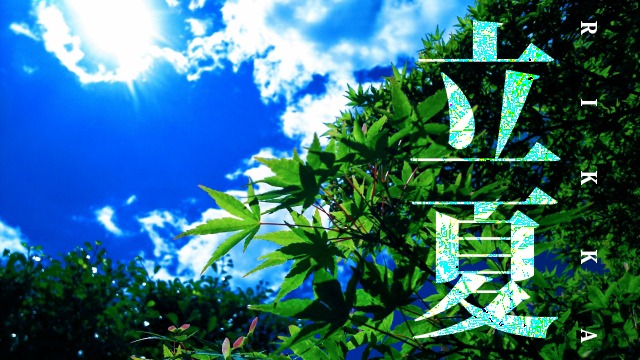
However, beneath this accessible and joyful melody lies something far more complex and intellectually demanding. The lyrics are written in classical literary Japanese, a formal, poetic language that even many native Japanese speakers find challenging today. This isn’t a song you can simply hum along to without deeper study – it’s a sophisticated work of art that requires cultural knowledge and literary understanding to fully appreciate. Think of it as the Japanese equivalent of an opera aria: beautiful to hear, but rich with layers of meaning that reward careful study.
The song has earned such respect among musicians and scholars that it was selected as one of “100 Best Japanese Songs,” a prestigious recognition that places it among the nation’s most treasured musical works.
The Scholarly Mind Behind the Poetry
To understand why “Natsu wa Kinu” is so linguistically sophisticated, we need to know about its remarkable creator, SASAKI Nobutsuna (1872-1963). Born into what could be called Japanese literary royalty, Sasaki came from a family where poetry and classical literature weren’t just hobbies – they were a way of life passed down through generations. His family had dedicated themselves to the study and preservation of Japanese literature for centuries, making young Nobutsuna heir to an incredible wealth of classical knowledge.

不明 – in the site of http://www.asahi-net.or.jp/~SG2H-YMST/yamatouta/ ;Website「やまとうた」 , パブリック・ドメイン, リンクによる
SASAKI’s expertise was so profound that he became one of Japan’s leading authorities on the Man-you-shuu, an 8th-century poetry collection that represents the very foundation of Japanese literature. The Man-you-shuu contains over 4,500 poems and is considered the oldest existing collection of Japanese poetry, making it roughly equivalent to what Homer’s epics represent to Western literature. For his groundbreaking scholarly work in preserving and interpreting these ancient texts, SASAKI was awarded the Order of Cultural Merit, Japan’s highest honor for cultural achievement – think of it as the Nobel Prize for Japanese cultural scholarship.
This background explains why “Natsu wa Kinu” reads more like classical poetry than a typical song lyric. SASAKI wasn’t just writing a summer song; he was creating a work that would demonstrate the continuing vitality of Japan’s ancient poetic traditions in a modern musical context. For contemporary listeners, appreciating this song fully requires what might be called “cultural literacy” – a deep understanding of Japanese literary history and classical references that were once common knowledge among educated Japanese but have become increasingly rare in our modern world.
The Intricate Architecture of Five Tanka Poems
What makes “Natsu wa Kinu” structurally unique is its sophisticated poetic construction. Rather than using conventional song verses, SASAKI crafted five complete tanka poems, each following the traditional Japanese poetic pattern of 5-7-5-7-7 syllables. Tanka is one of Japan’s most ancient and respected poetic forms, predating even haiku, and mastering it requires not just technical skill but deep cultural understanding. Each of the five tanka tells part of the summer story, and they’re woven together so skillfully that they create both individual moments of beauty and a cohesive narrative arc.
The first tanka introduces us to “Unohana” (deutzia flowers) blooming alongside the song of the “Hototogisu” (lesser cuckoo). This pairing has been a beloved symbol of early summer in Japanese poetry since the Man-you-shuu era – imagine how Western literature might pair roses with nightingales. However, SASAKI adds a subtle twist that reveals his deep knowledge: this particular combination is slightly “off-season,” and when the hototogisu sings at unexpected times, it’s called “shinobine” (yearning song) – a cry filled with longing that adds emotional depth to the natural imagery.
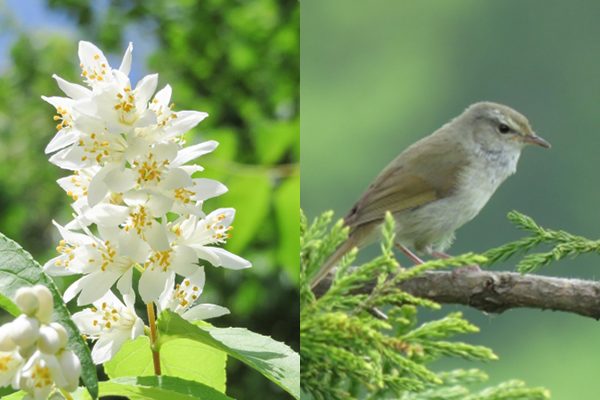
The second tanka contains one of the song’s most complex references, drawing from “Eiga Monogatari” (A Tale of Flowering Fortunes), a Heian period historical narrative from around 1000 CE. The original passage describes women “Taue”(planting rice) with their hakama (traditional split skirts) wet from early summer rains, while praying for the emperor’s reign to last a thousand years. SASAKI transforms this historical scene, changing “Shizume” (women of low status) to “Saotome” (rice-planting maidens) in 1932, perhaps reflecting changing social sensibilities. “Saotome” remains a common Japanese surname today, connecting this ancient imagery to contemporary life.
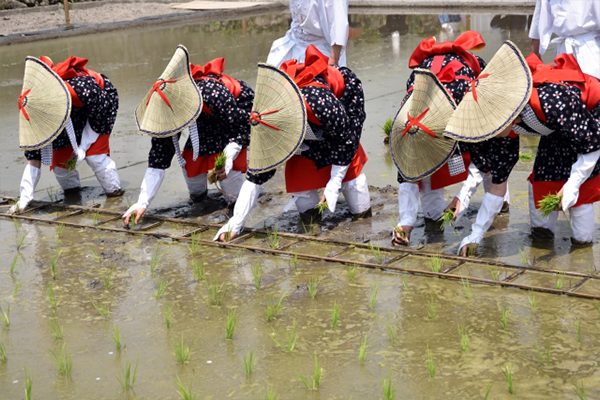
Classical Wisdom and Natural Beauty Intertwined
The third tanka draws from Chinese classical literature, specifically the famous story “Keisetsu no kou” about a poor student who studied by firefly light because he couldn’t afford oil for lamps. This tale was so well-known to prewar Japanese that it was immortalized in the graduation song “Hotaru no Hikari” (Light of Fireflies), which generations of Japanese students sang at school ceremonies. By including this reference, SASAKI gently reminds listeners not to waste the long summer days – a message about diligence and self-improvement that resonates with traditional East Asian educational values.
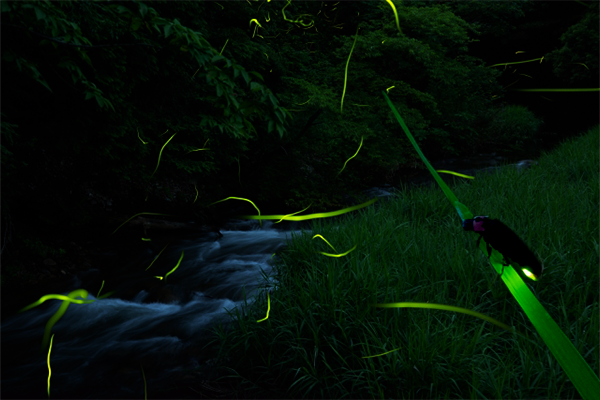
The fourth tanka presents a quintessentially Japanese summer scene: the “Ouchi” (Japanese bead tree, or Melia azedarach) blooming near a riverside gate, where a “Kuina” (water rail) can be heard calling. This isn’t just pretty nature imagery – it’s a sophisticated reference to classical literature including “Genji Monogatari ( The Tale of Genji ),” where the kuina’s distinctive call is compared to the sound of someone tapping at a gate, creating an atmosphere of mystery and anticipation. For readers familiar with these classical works, this single image evokes entire worlds of literary association.

The fifth and final tanka serves as a masterful summary, weaving together key elements from the previous four poems while introducing “Satsuki Yami” (May darkness). This refers to the deep darkness that characterizes the rainy season, when thick clouds block out light even during what should be the bright days of early summer. It’s a uniquely Japanese seasonal concept that captures how the rainy season creates an almost mystical quality of light and shadow.
Finally, for those learning Japanese, it’s worth noting that “Natsu wa Kinu” doesn’t mean “summer never comes” as English speakers might initially read it. In classical Japanese, “kinu” is the past tense of “kuru” (to come), making the title mean “Summer Has Come” – a joyful announcement that the season has finally arrived, bringing with it all the natural beauty and cultural richness that SASAKI so masterfully celebrates in his five interconnected poems.
This famous poem was selected as one of the 100 Best Japanese songs.
Sightseeing Link Sasaki Nobutsuna’s birthplace
▼This song is said to have been made here.

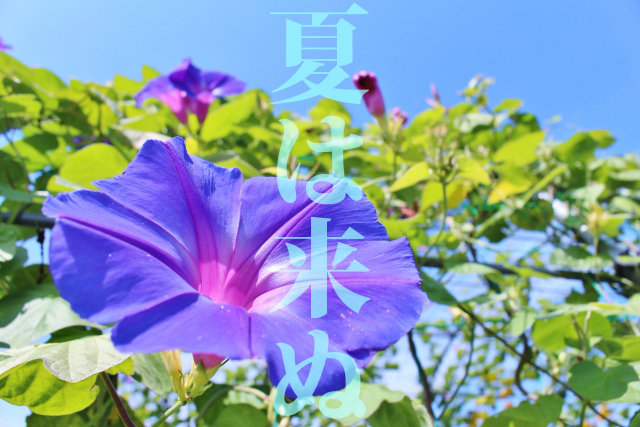

コメント